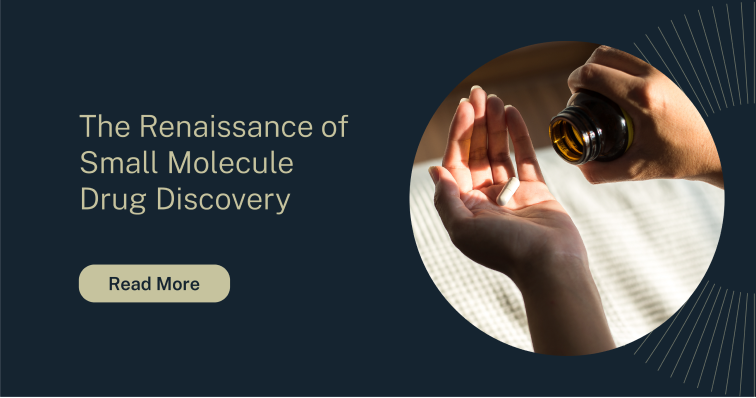Fresh off a blockbuster wave of innovation in the late 1990s, the small molecule drug discovery (SMDD) industry faced a harsh reality of rising costs and slowing innovation as the new millennium arrived. Survival demanded change. Contract research organizations (CROs) helped spur that change and reinvigorate SMDD.
CROs Help Control Costs and Spur Innovation
In ancient Roman mythology, Janus is the god of beginnings, gates, duality, and transitions. In SMDD, CROs stepped up as a Janus-savior exactly when change was most needed, helping find middle ground between cost savings and innovation.
Over the past few decades, the cost of drug development has skyrocketed. In 2019, R&D spending was ten times the amount of spending in the 1980s, according to the U.S. Congressional Budget Office.[1] While many factors have fuelled this increase, the pervasiveness of combinatorial chemistry in the 2000s certainly played a role. As scores of compounds were designed, production costs exploded; companies quickly started outsourcing. Pharma and biotech could keep their in-house medicinal chemistry expertise but save money and optimize operations by outsourcing synthesis to CROs, essentially swapping the physical challenge of creating compounds for the informatics challenge of securely managing compound data.
Looking beyond the financial benefits of outsourcing tasks like synthesis, sponsor companies soon realized CROs could also help them overcome an innovation lull caused, in part, by blockbuster patent expiration. CROs could increase a company’s scale and capacity, as well as expand their pipeline. They could provide expertise not available in-house, extend global reach, and provide access to cutting-edge technologies that a sponsor didn’t have the budget or desire to procure.
For many pharma and biotech companies, CROs evolved from being a luxury into an essential partner in controlling costs whilst spurring innovation.
Biotechs Drive CRO Growth
As reliance on CROs has grown, money is increasingly moving away from internal R&D and toward CROs. As a result, the global contract research market is flourishing. Its current estimated $73.38 billion valuation is expected to reach almost $163.48 billion by 2029, representing a compounded annual growth rate of around 12%[2].
Biotechs are playing a huge part in fuelling CRO growth. In particular, companies working with small molecule drug candidates are heavily outsourcing to CROs.[3] In recent blog posts, we explored how biotechs have helped fill pharma’s innovation gap while facing cautious investors. In essence, biotechs must innovate while keeping costs down. A key way they’re doing this is through outsourcing. By some accounts, biotechs outsource anywhere from two-thirds to 100% of their R&D activities to CROs, whereas big pharma outsources approximately 45% of its activities.[4]
The majority of CRO outsourcing has historically fallen within the clinical development category, as the early CRO market initially focused largely on testing and trials. But early-phase partnerships are rapidly gaining momentum. In fact, this category of CRO services, which includes early discovery initiatives, pre-clinical studies, and drug development efforts, is projected to grow at a faster pace than all other segments, including clinical trials and laboratory services.[2]
The role CROs play in discovery today extends beyond synthesis and into many other areas of early R&D, including target ID and validation, assay creation, artificial intelligence, precision medicine, formulation development, etc. There are now thousands of CROs flooding the market, and companies must distinguish not only their scientific expertise but also their ability to be a trusted partner with efficient and reliable processes.
Optimizing the Biotech-CRO Relationship
Despite its benefits, CRO outsourcing is not without obstacles. When sponsors are narrowing down CRO candidates, due diligence may be needed to ensure a CRO will be capable of driving innovation, optimizing processes, supporting technology integration, facilitating communication and decision-making, and ensuring data integrity, documentation readiness, and regulatory compliance. Therefore, a CRO must not only have the expertise and specialty tools needed to produce and analyze scientific data, but also the processes and systems in place to collect, manage, store, and share data so that communication and collaboration are easy, and results are trustworthy and traceable.
McKinsey recently explored how CROs and biotechs could work better together to fine-tune partnerships in clinical development.[5] Their examination revealed that biotechs—despite their increasingly prominent role in clinical development—often feel underserved by CROs. McKinsey recommends that CROs work to ferment their role as scientific and strategic advisors, help fill capability and technology gaps, and take a lead role in integrating point solutions and data.
In a similar vein, the Dotmatics team is exploring how CROs and biotechs can work better together at the other end of the spectrum—early discovery. We’ve enlisted the ACS to help us uncover obstacles that may impact efficiency, innovation, data integrity, and decision-making as CROs and biotechs collaborate in SMDD. We’ll reveal our findings in a future blog. Stay tuned!
References
Research and Development in the Pharmaceutical Industry.Congressional Budget Office. April 2021. https://www.cbo.gov/publication/57126
Market Analysis Report: Contract Research Organization (CRO) Services Market Size, Share.Fortune Business Insights. March 2022.
Pharma R&D Outsourcing Market – Global Outlook & Forecast 2022-2027. ReportLinker. September 2022.
Locwin, B. R&D Outsourcing Trends: Not A Zero-Sum Game. Contract Pharma. October 6, 2021.
Blyes, J., Fleming, E., Mirman, H., and The, L. CROs and biotech companies: Fine-tuning the partnership.McKinsey & Company. June 9, 2022.



